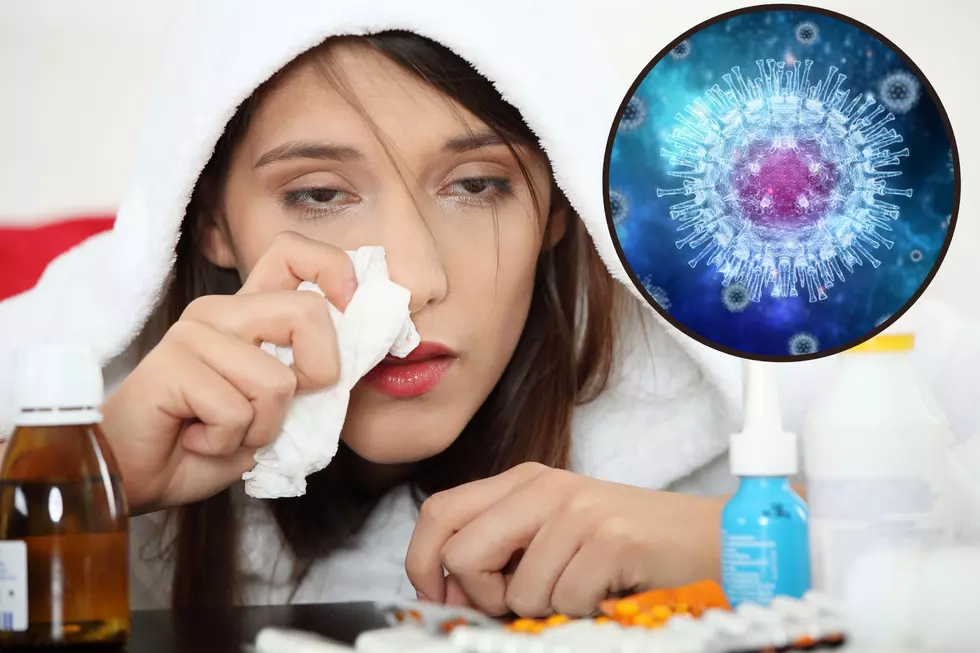
How to Tell if You Have Texas Cedar Fever, the Flu, or COVID

'Tis the season for runny noses, itchy eyes, scratchy throats, sneezing, and coughing. So the big question is, is it allergies, COVID-19, or the flu? Get seen, get tested. Is there a telltale sign that points in one direction or another? The answer to the latter is a resounding yes.
Although it’s become increasingly difficult to tell, especially now with all this wind, high pollen count, cold weather, the coronavirus omicron variant, and flu season upon us all at the same time here in Texas.
The cedar trees are at peak pollen production during January. Nonetheless, as the docs say "Get seen, get tested."
The most unique thing about COVID is a lot of the symptoms that are identified as "COVID-19" seem to overlap with the very same symptoms we know about a cold, influenza, and/or seasonal allergies. This is why so many Texans are confused and worried whenever we start experiencing symptoms that mimic the dreaded COVID-19.
The good thing is, that there are symptomatic trademarks toward COVID compared to the cold, allergies, and/or the flu. Want to know if your symptoms align with either cedar fever allergies, COVID-19, or the flu? Here's what the Texas A&M Forrest Service experts have just revealed.
CEDAR FEVER
“Cedar fever is the worst west of I-35, where you have primarily Ashe juniper tree, also known as mountain cedars, oaks and some other species,” said Jonathan Motsinger, Texas A&M Forest Service Central Texas Operations head. “And because all of those cedar trees, oaks and junipers are producing pollen at the same time, you’re going to get a higher concentration of pollen in the air.”
Source: Jonathan Motsinger, Texas A&M Forest Service
Coronavirus or COVID19 is an illness that causes respiratory distress. Other coronavirus symptoms include cough, fever, difficulty breathing, body aches, sore throat, and more. Prevention includes frequent hand-washing, coughing into the pit of the elbow, wearing a face covering, staying home when sick, and practicing social distancing.
Flu symptoms are a lot like COVI D-19 the flu also spreads by droplets made when people sneeze and/or couch and spray into the air. The flu also causes respiratory distress and has symptoms that include fever, cough, sore throat, runny nose, body aches, fatigue, and more. The best flu treatment is the vaccine. When it comes to the flu vs a cold the main difference is that the flu is much stronger and comes with fever.
Allergy symptoms are caused by different factors and are not contagious. Symptoms of seasonal allergies are sneezing, runny nose, congestion, and coughing. The best way to avoid allergy symptoms is to avoid the allergens that cause the symptoms. If you are not sure what causes your allergies see your Doctor about testing you and setting up a treatment plan that'll work for you. Source: Scottsdale Sinus and Allergy Center.
Doctors & Pharmacists Agree Ways To Avoid
The best advice from two medical doctors (Randell and Salyer) and a local pharmacist (McCoy) that I spoke with, all agreed that there are ways to identify and treat all the above symptoms. Go see your doctor, be seen, and get tested. However, the best way is to avoid them altogether, by following safety protocol, getting vaccinated, taking your vitamins, and exercising.
Answers to 25 common COVID-19 vaccine questions
More From 100.7 KOOL FM









